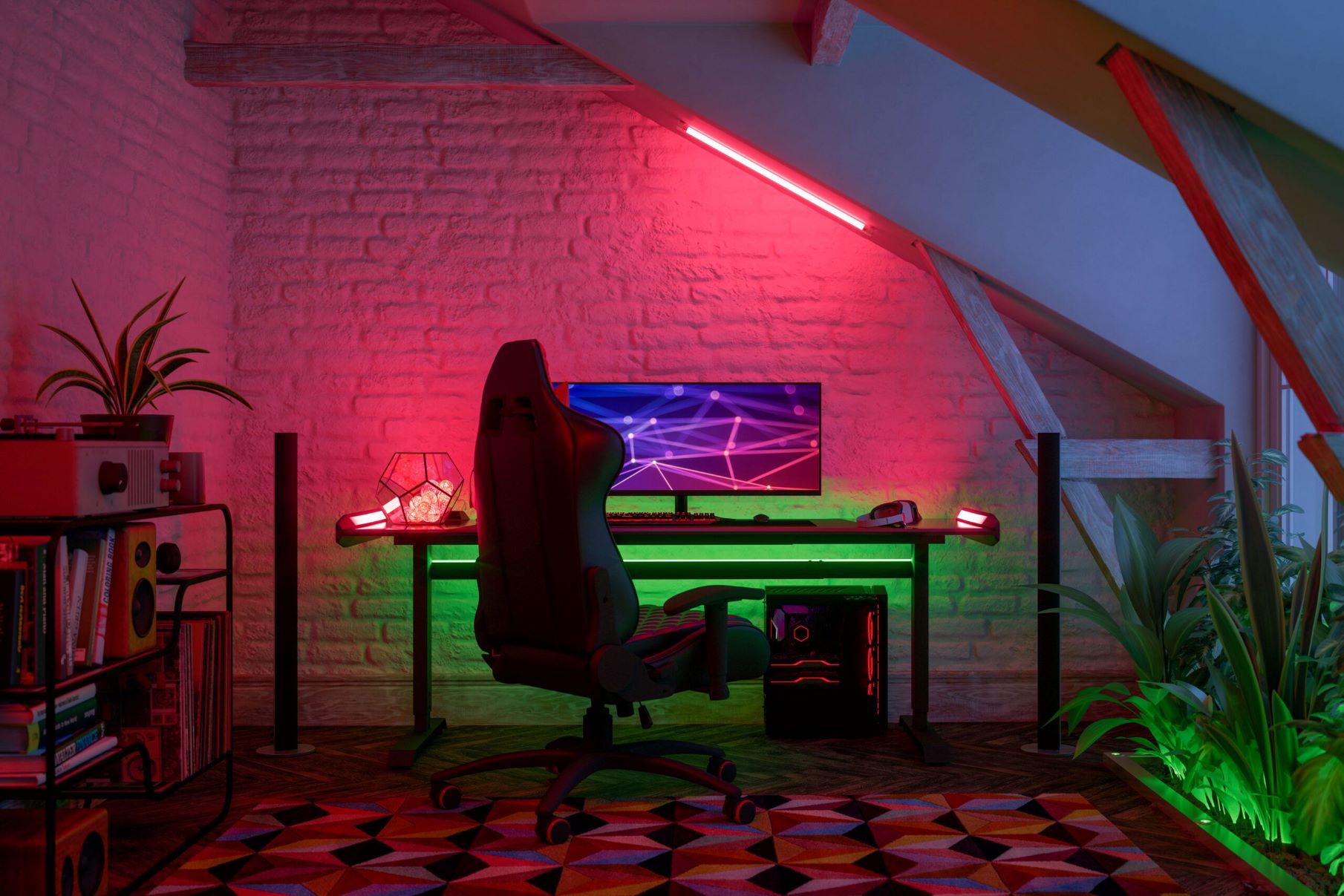
LED lights have become increasingly popular in recent years, revolutionizing the way we illuminate our homes, offices, and outdoor spaces. These energy-efficient light sources offer numerous benefits over traditional incandescent and fluorescent lights. From their longevity and durability to their eco-friendly nature, LED lights have quickly become the lighting solution of choice for many. But how much do you really know about LED lights? In this article, we will delve into 15 fascinating facts about LED lights that will not only broaden your knowledge but also shed light on the incredible advancements in lighting technology. So, let’s dive into the world of LED lights and discover some exciting facts that might surprise you!
Key Takeaways:
- LED lights are super energy efficient, which means they use way less power than traditional lights. This helps save money and is better for the environment!
- LED lights last a super long time, are really tough, and come in lots of colors. They’re also great for the environment and can be controlled with smart systems.
LED Lights are Energy Efficient
LED lights are known for their energy efficiency, consuming significantly less power compared to traditional incandescent or fluorescent lights. This makes them a cost-effective and environmentally friendly lighting option.
LED Lights have Long Lifespan
LED lights have an impressive lifespan, lasting up to 50,000 hours or more. This means fewer replacements and reduced maintenance costs in the long run.
LED Lights are Durable
LED lights are resistant to shock, vibrations, and external impacts, making them highly durable. They are ideal for both indoor and outdoor use as they can withstand harsh conditions.
LED Lights Emit Directional Light
LED lights emit light in a specific direction, unlike traditional bulbs that emit light in all directions. This directional lighting ensures efficient utilization of light and minimizes wastage.
LED Lights have Instant On/Off
LED lights turn on instantly without any warm-up period, providing immediate full brightness. They also don’t experience frequent on/off cycles, which can reduce their lifespan.
LED Lights Produce Less Heat
LED lights generate very little heat compared to other lighting technologies. This not only helps to keep the surrounding environment cooler but also reduces the risk of fire hazards.
LED Lights are Mercury-Free
Unlike fluorescent lights, LED lights do not contain mercury, a harmful substance that can be detrimental to human health and the environment. LED lights are a safer and eco-friendly lighting option.
LED Lights Offer a Wide Color Range
LED lights come in a vast range of colors, allowing for creative lighting designs, mood lighting, and customized aesthetics. They can be easily adjusted to create different atmospheres.
LED Lights are Dimmable
Many LED lights are compatible with dimmer switches, offering the flexibility to adjust the brightness according to personal preferences and lighting needs.
LED Lights are UV-Free
LED lights do not emit ultraviolet (UV) radiation, making them ideal for illuminating sensitive materials and artworks that can be damaged by UV exposure.
LED Lights are Environmentally Friendly
LED lights consume less energy, produce less waste, and have a longer lifespan, making them a greener lighting option that helps reduce carbon footprint and environmental impact.
LED Lights are Low Maintenance
Due to their long lifespan and durability, LED lights require minimal maintenance. They save you time and effort in frequent replacements and maintenance tasks.
LED Lights are Versatile
LED lights come in various shapes, sizes, and forms, making them suitable for a wide range of applications, including residential, commercial, outdoor lighting, and even automotive lighting.
LED Lights Offer Better Color Rendering
LED lights have excellent color rendering properties, meaning they can accurately showcase the true colors of objects, creating a more visually appealing and vibrant environment.
LED Lights are Instantly Compatible with Smart Controls
LED lights can be easily integrated with smart lighting systems and controls, allowing for remote access, automated scheduling, and energy-saving features, enhancing convenience and efficiency.
Conclusion
LED lights have revolutionized the lighting industry with their numerous benefits. They are energy-efficient, durable, and environmentally friendly. LED lights are available in various colors and designs, making them suitable for different applications, both indoor and outdoor. Additionally, they have a longer lifespan compared to traditional lighting options, reducing the need for frequent replacements.
With the advancements in technology, LED lights are becoming more affordable and widely accessible. They offer better quality illumination and can be dimmed or customized according to individual preferences. LED lights not only reduce electricity consumption but also emit less heat, making them safer to use.
In conclusion, LED lights are a smart and sustainable choice for illuminating our homes, offices, and public spaces. With their efficiency and longevity, they are a wise investment that saves both energy and money while contributing to a greener planet.
FAQs
1. Are LED lights more energy-efficient than traditional lights?
Yes, LED lights are highly energy-efficient. They consume significantly less electricity compared to traditional incandescent or fluorescent lights, making them more cost-effective in the long run.
2. Can LED lights be used outdoors?
Yes, LED lights are suitable for outdoor use. They are designed to withstand various weather conditions and have a longer lifespan compared to traditional outdoor lighting options.
3. Do LED lights emit harmful radiation?
No, LED lights do not emit harmful ultraviolet (UV) or infrared (IR) radiation. They are safe for use and do not cause any adverse health effects.
4. Can LED lights be dimmed?
Yes, many LED lights are dimmable. However, it is important to check the product specifications to ensure that the LED lights you purchase are compatible with dimming systems.
5. Do LED lights produce heat?
LED lights produce significantly less heat compared to traditional lighting options. They are cooler to touch, making them safer for use in various applications.
LED lights offer remarkable benefits, but there's more to explore in the world of illumination and beyond. For aquarium enthusiasts, creating the perfect underwater environment for betta fish is crucial. Choosing the right lightbulb can make all the difference in your home's ambiance and energy efficiency. If you're seeking thrilling adventures, RC helicopters provide an exciting way to take to the skies. Whether you're interested in enhancing your living spaces, caring for aquatic companions, or embarking on aerial pursuits, our articles have you covered.
Was this page helpful?
Our commitment to delivering trustworthy and engaging content is at the heart of what we do. Each fact on our site is contributed by real users like you, bringing a wealth of diverse insights and information. To ensure the highest standards of accuracy and reliability, our dedicated editors meticulously review each submission. This process guarantees that the facts we share are not only fascinating but also credible. Trust in our commitment to quality and authenticity as you explore and learn with us.


